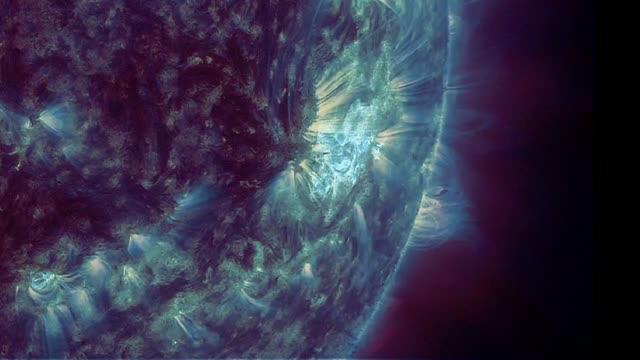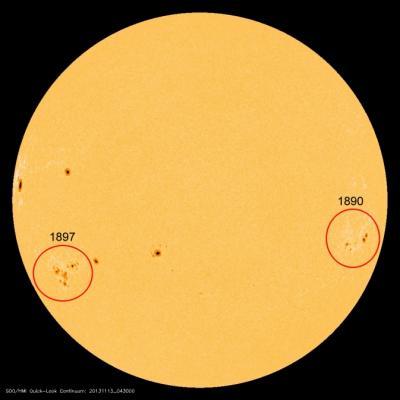Coming
Active region 1897 rounded the sun's southeastern limb on Nov. 11, 2013, and like AR1890, is approximately the size of Jupiter.
What is a Solar Flare?
Solar flares are powerful bursts of radiation. Harmful radiation from a flare cannot pass through Earth's atmosphere to physically affect humans on the ground, however -- when intense enough -- they can disturb the atmosphere in the layer where GPS and communications signals travel.
Why This Uptick in Flares Now?
Increased numbers of flares are quite common at the moment, since the sun's normal 11-year activity cycle is ramping up toward solar maximum conditions. Humans have tracked this solar cycle continuously since it was discovered in 1843, and it is normal for there to be many flares a day during the sun's peak activity, called solar maximum.

AR1890 gave us a lot of activity during its time on the face of the solar disk. As it rotated out of view, it continued to give off low-level flares.
(Photo Credit: Image : NASA/SDO)

This image was captured on Nov. 13, 2013, by NASA's Solar Dynamics Observatory's Helioseismic and Magnetic Imager, or HMI, instrument, designed to study the magnetic field at the solar surface, or photosphere.
(Photo Credit: Image : NASA/SDO/HMI)
Source: NASA/Goddard Space Flight Center